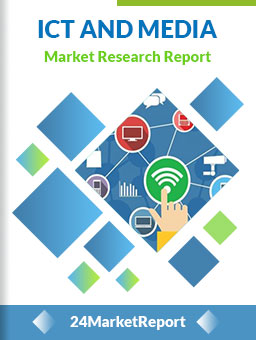
Download FREE Report Sample
Download Free sampleMARKET INSIGHTS
Global Industrial Facility Operations & Maintenance market was valued at USD 25.99 billion in 2024. The market is projected to grow from USD 27.65 billion in 2025 to USD 40.24 billion by 2032, exhibiting a CAGR of 6.6% during the forecast period.
Industrial Facility Operations & Maintenance encompasses comprehensive management services for industrial parks (IPs) and special economic zones (SEZs), focusing on strategic development, tenant acquisition, and ongoing operational support. These services include infrastructure maintenance, utility management, security systems, and financial solutions tailored for industrial tenants. The sector has evolved into a critical enabler for sustainable industrial development, particularly in emerging economies.
The market growth is driven by increasing globalization of manufacturing, rising demand for turnkey industrial solutions, and government initiatives promoting SEZs. Asia Pacific dominates the market with 42% share in 2024, fueled by China's aggressive industrial park development. However, North America maintains strong growth through technological integration in facility management, with predictive maintenance solutions gaining traction. Key players like CBRE and Jones Lang LaSalle are expanding their service portfolios through strategic acquisitions, while regional specialists such as China Merchants Shekou Industrial Zone Holdings are capturing local market share through integrated industrial park models.
Accelerated Industrial Digitalization to Drive Efficiency in Facility Operations
The adoption of Industry 4.0 technologies such as IoT and AI is transforming industrial facility management. Smart sensors and predictive maintenance systems are enabling real-time monitoring of equipment performance across 63% of modern manufacturing facilities. These digital solutions reduce unexpected downtime by 35-45% while improving operational efficiency through data-driven decision making. Leading operators are integrating digital twins of physical assets to simulate maintenance scenarios and optimize workflows. The convergence of operational technology (OT) with IT systems creates unprecedented visibility across industrial facilities, driving demand for advanced operations and maintenance services.
Growing Emphasis on Sustainable Operations to Boost Market Growth
To know more about market statistics, Download a FREE Sample copy
Sustainability initiatives are reshaping facility management priorities, with 78% of industrial operators now implementing energy efficiency programs. The market is witnessing increasing demand for LEED-certified facility services that reduce carbon footprints while maintaining productivity. Modern maintenance protocols emphasize waste reduction through circular economy principles - recovering 92% of materials in some advanced facilities. Regulatory pressures like the EU's Energy Efficiency Directive are accelerating green transitions, creating new service verticals in carbon-neutral facility operations. Providers offering integrated sustainability solutions are gaining competitive advantage as environmental performance becomes a key selection criterion.
➤ For instance, leading service providers now offer comprehensive energy audits that typically identify 15-25% potential savings in industrial energy consumption through optimized maintenance schedules.
Furthermore, the rise of renewable energy integration in industrial parks requires specialized maintenance expertise. Solar panel cleaning robots and wind turbine diagnostic systems represent growing service segments as manufacturers shift toward cleaner power sources. These sustainability-driven transformations are expanding the scope and value of industrial maintenance services globally.
High Implementation Costs and ROI Uncertainty to Deter Market Growth
While advanced facility management solutions offer long-term benefits, the initial investment remains prohibitive for many operators. Modern predictive maintenance systems require capital expenditures averaging $250,000-$500,000 for mid-sized facilities, with integration costs adding 30-40% to baseline figures. Many industrial operators hesitate to allocate budgets due to unclear return timelines, particularly in capital-intensive industries with thin margins. This financial barrier slows adoption rates despite proven operational benefits.
Other Restraints
Workforce Skill Gaps
The industry faces a critical shortage of technicians qualified in both traditional maintenance and digital technologies. Over 45% of facility managers report difficulty finding personnel with cross-disciplinary expertise in mechanical systems and data analytics. This talent deficit creates operational bottlenecks as legacy workers retire and complex new systems require specialized knowledge.
Fragmented Regulatory Landscape
Diverging regional safety and environmental regulations complicate service standardization. Multi-national operators must navigate varying compliance requirements that increase service delivery costs by 18-22% in some regions. This regulatory fragmentation particularly impacts providers scaling solutions across emerging markets with evolving standards.
Integration Complexities in Legacy Facilities to Challenge Service Providers
Modernization of aging industrial infrastructure presents significant technical hurdles. Many facilities operate equipment spanning multiple technology generations, requiring customized integration approaches. Retrofit solutions for legacy systems typically cost 60-80% more than new installations, with unpredictable performance outcomes. These integration challenges force maintenance providers to maintain dual capability sets - supporting outdated systems while implementing next-generation solutions.
Additionally, cybersecurity risks multiply as older control systems connect to modern networks. Industrial facilities now average 11 attempted breaches per month, with maintenance interfaces being common attack vectors. Providers must balance operational visibility needs with robust security protocols, increasing solution complexity and deployment timelines.
Market fragmentation also persists, with the top five providers controlling just 28% of the global service market. This competitive landscape creates pricing pressures while complicating quality standardization across regions and sectors.
Emerging Markets and Specialized Service Models to Drive Future Growth
Asia-Pacific represents the fastest growing regional market, with industrial parks expanding at 7.8% annually. Governments are investing heavily in SEZ infrastructure - China's industrial zone development budgets increased by 14% last year alone. This growth creates demand for turnkey facility management solutions tailored to local operating conditions. Providers offering culturally adapted services with regional partnerships are gaining footholds in these high-potential markets.
New service models like Maintenance-as-a-Service (MaaS) are disrupting traditional contracting approaches. These subscription-based solutions provide predictable costs while leveraging shared expertise across client portfolios. Early adopters report 22-30% reductions in annual maintenance expenditures through MaaS implementations.
The rising complexity of industrial assets also creates specialized opportunities in niche segments. Hydrogen facility maintenance, semiconductor cleanroom operations, and biopharma HVAC management each require distinct expertise. Providers developing focused capabilities in these high-value specialties command premium pricing while building resilient service portfolios.
Buildings and Facilities Segment Dominates Due to Increased Industrial Infrastructure Development
The market is segmented based on type into:
Buildings and Facilities
Subtypes: Construction management, Facility maintenance, Energy management, and others
Management Services
Financial Services
Subtypes: Leasing, Investment management, and others
Others
Enterprise Segment Leads Owing to High Demand from Manufacturing and Industrial Parks
The market is segmented based on application into:
Government
University
Enterprise
Subtypes: Manufacturing plants, Industrial parks, Warehouses, and others
Integrated Facility Management Gains Traction for Comprehensive Solutions
The market is segmented based on service model into:
Hard Services
Soft Services
Integrated Facility Management
Bundled Services
Manufacturing Sector Drives Market Growth with Increased Industrialization
The market is segmented based on end-use industry into:
Manufacturing
Logistics
Energy
Pharmaceuticals
Others
Strategic Expansion and Digital Transformation Driving Market Competition
The global industrial facility operations and maintenance market features a highly competitive and fragmented landscape, with dominant players competing alongside regional specialists and emerging service providers. CBRE Group, Inc. and Jones Lang LaSalle (JLL) collectively accounted for over 25% of the market share in 2024, leveraging their integrated service models and global footprints spanning over 80 countries. Their leadership position stems from decades of expertise in facility lifecycle management and recent investments in smart building technologies.
The mid-tier segment demonstrates significant activity, with companies like Cushman & Wakefield and Colliers International differentiating through specialized industrial park management solutions. These firms have successfully capitalized on the growing demand for turnkey operations in special economic zones, particularly across Asian markets where industrial park development continues at a rapid pace.
Market evolution is being shaped by two parallel trends: consolidation among major players through strategic acquisitions, and the emergence of technology-focused entrants offering IoT-enabled maintenance solutions. This dynamic creates both challenges for traditional service providers and opportunities for partnerships between established firms and digital innovators.
Asian players are gaining increasing prominence, with China Merchants Shekou Industrial Zone Holdings demonstrating remarkable growth through its unique "port-park-city" integrated development model. Meanwhile, Japanese conglomerates like Mitsubishi Estate are exporting their precision operations methodologies to international markets, creating new benchmarks for facility efficiency.
CBRE Group, Inc. (U.S.)
Jones Lang LaSalle (U.S.)
Cushman & Wakefield (U.S.)
Savills plc (UK)
Colliers International (Canada)
Newmark Group, Inc. (U.S.)
Mitsui Fudosan (Japan)
Segro plc (UK)
Mitsubishi Estate Co., Ltd. (Japan)
China Merchants Group (China)
The adoption of smart facility management technologies is revolutionizing the industrial operations and maintenance sector. Increasingly, companies are leveraging predictive maintenance tools, IoT-enabled sensors, and AI-driven analytics to minimize downtime and optimize asset performance. Industrial facilities utilizing these technologies have reported 30-40% reductions in unplanned outages, significantly improving operational efficiency. Furthermore, the integration of advanced Building Management Systems (BMS) and Computerized Maintenance Management Systems (CMMS) allows for real-time monitoring and data-driven decision-making across multiple sites. This technological shift is particularly prominent in developed markets, where nearly 65% of large-scale industrial facilities have adopted some form of automation in their maintenance workflows.
Sustainability-Driven Operations
Sustainability initiatives are reshaping industrial facility management strategies, with energy efficiency improvements and waste reduction programs becoming standard practice. The market has seen growing demand for green building certifications like LEED and BREEAM in industrial spaces, pushing operators to prioritize eco-friendly maintenance solutions. Notably, companies implementing circular economy principles in facility operations have achieved 15-25% reductions in energy consumption, making sustainability both an environmental and economic imperative. Water recycling systems, solar panel integration, and smart lighting solutions are becoming baseline requirements rather than optional upgrades.
The global proliferation of industrial parks and special economic zones is creating substantial demand for comprehensive operations and maintenance services. Governments worldwide are recognizing these zones as catalysts for regional development, with over 5,400 SEZs established globally as of 2024. The operation models for these industrial clusters emphasize end-to-end service packages, from infrastructure upkeep to tenant support programs. Notably, Asian markets dominate this trend, accounting for approximately 60% of new industrial park developments, driven by manufacturing expansion in China, India and Southeast Asia. The integration of logistics hubs within industrial parks further amplifies the need for sophisticated facility management solutions that can accommodate complex supply chain requirements.
North America
The North American Industrial Facility Operations & Maintenance market is driven by advanced infrastructure and high adoption of smart facility management technologies. The U.S. accounts for over 70% of the regional market, fueled by strong demand from manufacturing, logistics, and pharmaceuticals sectors. Recent investments in industrial automation and energy-efficient buildings are reshaping operations, with companies like CBRE and Jones Lang LaSalle leading integrated service offerings. However, labor shortages and rising operational costs pose challenges, pushing firms toward predictive maintenance solutions and AI-driven asset management.
Europe
Europe’s market thrives on sustainability mandates and stringent safety regulations, particularly in Germany and the U.K. The region is a pioneer in adopting circular economy principles, with industrial parks prioritizing waste reduction and energy optimization. EU-funded initiatives like the Horizon Europe program support innovations in facility management, while competitive pressure from local players like Savills and LEG Immobilien drives service diversification. The shift toward hybrid workspaces post-pandemic has also increased demand for flexible industrial facility solutions.
Asia-Pacific
As the fastest-growing market, the Asia-Pacific region benefits from rapid industrialization, especially in China and India. China’s Belt and Road Initiative has accelerated the development of special economic zones (SEZs), with firms like China Merchants Shekou dominating integrated industrial park services. While cost efficiency remains a priority, the emphasis on green buildings and smart manufacturing is rising. Challenges include fragmented service standards and underdeveloped infrastructure in emerging economies, though Japan and South Korea lead in technologically advanced solutions.
South America
The market in South America is opportunity-rich but volatile, with Brazil and Argentina as key players. Growing foreign investments in mining and agribusiness are driving demand for modernized industrial facilities, yet economic instability delays large-scale projects. Local providers focus on cost-competitive maintenance models, while multinationals like Cushman & Wakefield expand cautiously. Infrastructure gaps and regulatory inconsistencies hinder growth, but renewable energy projects present new avenues for facility management services.
Middle East & Africa
This region shows long-term potential, led by UAE and Saudi Arabia’s Vision 2030 initiatives. Mega-projects like NEOM and industrial city developments are creating demand for high-end operations and maintenance services. However, reliance on oil revenues and political uncertainties slow progress in some areas. Providers such as Colliers International are targeting logistics hubs and free zones, while local firms compete through niche, culturally adapted solutions. The lack of skilled labor remains a persistent challenge despite growing investments.
This market research report offers a holistic overview of global and regional markets for the forecast period 2025–2032. It presents accurate and actionable insights based on a blend of primary and secondary research.
✅ Market Overview
Global and regional market size (historical & forecast)
Growth trends and value/volume projections
✅ Segmentation Analysis
By product type or category
By application or usage area
By end-user industry
By distribution channel (if applicable)
✅ Regional Insights
North America, Europe, Asia-Pacific, Latin America, Middle East & Africa
Country-level data for key markets
✅ Competitive Landscape
Company profiles and market share analysis
Key strategies: M&A, partnerships, expansions
Product portfolio and pricing strategies
✅ Technology & Innovation
Emerging technologies and R&D trends
Automation, digitalization, sustainability initiatives
Impact of AI, IoT, or other disruptors (where applicable)
✅ Market Dynamics
Key drivers supporting market growth
Restraints and potential risk factors
Supply chain trends and challenges
✅ Opportunities & Recommendations
High-growth segments
Investment hotspots
Strategic suggestions for stakeholders
✅ Stakeholder Insights
Target audience includes manufacturers, suppliers, distributors, investors, regulators, and policymakers
-> Key players include Jones Lang LaSalle, CBRE, Cushman & Wakefield, Savills, Colliers International, and Newmark Group, among others.
-> Key growth drivers include increasing industrialization, expansion of special economic zones, and demand for integrated facility management services.
-> Asia-Pacific is the fastest-growing region, driven by China's industrial park developments and India's manufacturing growth.
-> Emerging trends include smart facility management solutions, IoT integration, and sustainable operations practices.

Speak to our Custom Research Team and get the Custom Research in a budget
Custom ResearchFrequently Asked Questions ?
A license granted to one user. Rules or conditions might be applied for e.g. the use of electric files (PDFs) or printings, depending on product.
A license granted to multiple users.
A license granted to a single business site/establishment.
A license granted to all employees within organisation access to the product.
Upto Working 24 to 48 hrs
Upto 72 hrs max - Weekends and Public Holidays
Online Payments with PayPal and CCavenue
Wire Transfer/Bank Transfer
Hard Copy



 Industry Market Size
Industry Market Size SWOT Analysis
SWOT Analysis Industry Major Players
Industry Major Players Revenue Forecasts
Revenue Forecasts Historical and Forecast Growth
Historical and Forecast Growth Profitability Analysis
Profitability Analysis
























